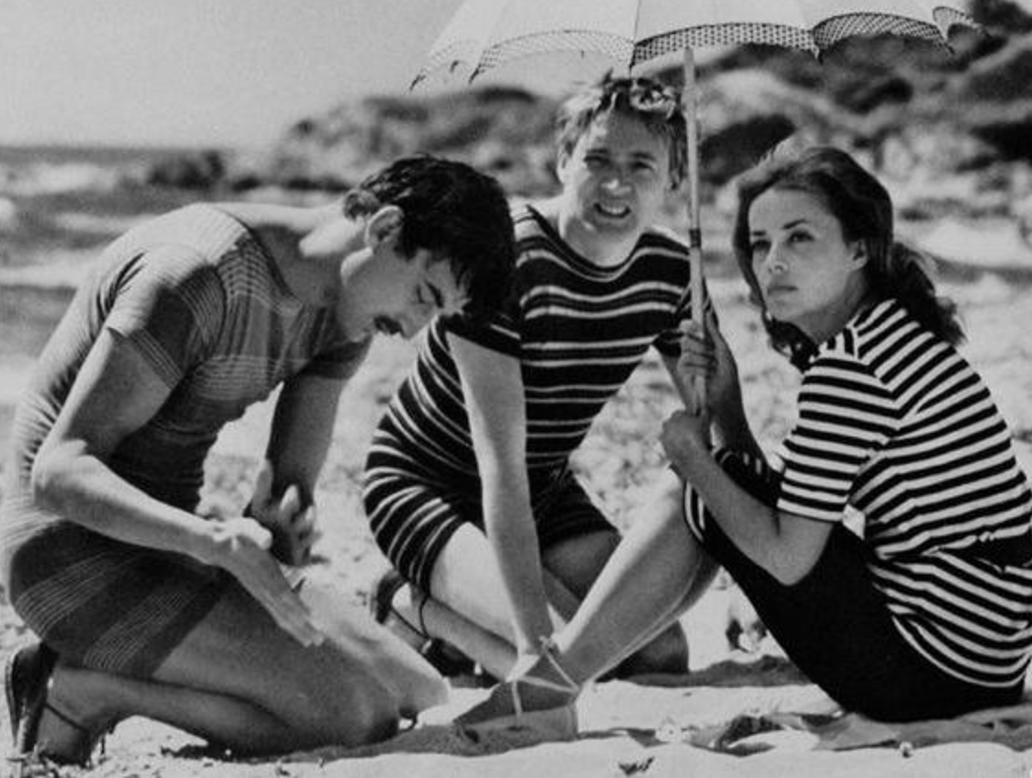Coming on strong after the one-two punch of his debut and sophomore films, The 400 Blows and Don’t Shoot the Piano Player, François Truffaut followed up with his third masterpiece, Jules and Jim, based on the Henri-Pierre Roché novel he just happened to come across while browsing through books at a secondhand shop along the Seine (because, at one time, all great ideas and inspirations were born along the Seine). After reading it in the 1950s, Truffaut released his triumphant adaptation of the material in 1962.
Rife with all the best elements of a Greek tragedy, it’s only fitting that the ineffable, alluring Catherine (Jeanne Moreau) should serve to remind best friends Jules (Oskar Werner) and Jim (Henri Serre) of the Hellenistic bust of a goddess they come across at “one of those” slide shows. So entranced by the bust, in fact, the duo heads to the Greek island in the Adriatic Sea to track down the original statue. It’s there that they encounter “free-spirited” (we all know what that’s a euphemism for) Catherine.
Set against the backdrop of World War I for a considerable portion of the narrative, Jules’ Austrian nationality naturally pits him against Frenchman Jim (though, namewise, you’d think it would be the other way around) during the war–an overt symbol of how they’re pitted against one another in matters of l’amour. This is nothing compared to the tacit battle they engage in over the favor of Catherine, who ultimately ends up marrying the more outgoing Jules and moving to the appropriate milieu for their fraught romance: the Black Forest in southwestern Germany.
In the wake of the war, of which Jim’s side has won (again, more ironic symbolism), Jim’s visit to what he assumes will be their idyllic little existence–especially now that they’ve had a daughter named Sabine–proves to be in more than mild contrast to what he expected, as Jules confesses that Catherine often has affairs and disappears for blocks of time. Though Jim feels for his friend, of course he can’t deny that there’s still the old spark between him and Catherine, which is stoked by Catherine’s advances.
The combined perspectives on the emblematic nature of woman as temptress/harpy by Roché and Truffaut is executed with cold valor by Moreau, the perfect blend of steeliness and fieriness. She’ll have what she wants out of men–and Jim in particular–even if she has to kill for it. In real life, however, it’s turned out a bit differently, with Henri Serre being the last one left alive to deal with the grief of losing his two comrades.
Like Anna Karina in Band of Outsiders, Moreau would go on to star in many other films (incidentally, making a cameo with the aforementioned Karina in A Woman Is A Woman to, in meta Godard fashion, discuss Jules and Jim), it was always this role as the apex of a bizarre love triangle that made her so iconic, such a beacon of the depiction of how twisted love can get as only French cinema can portray.






















